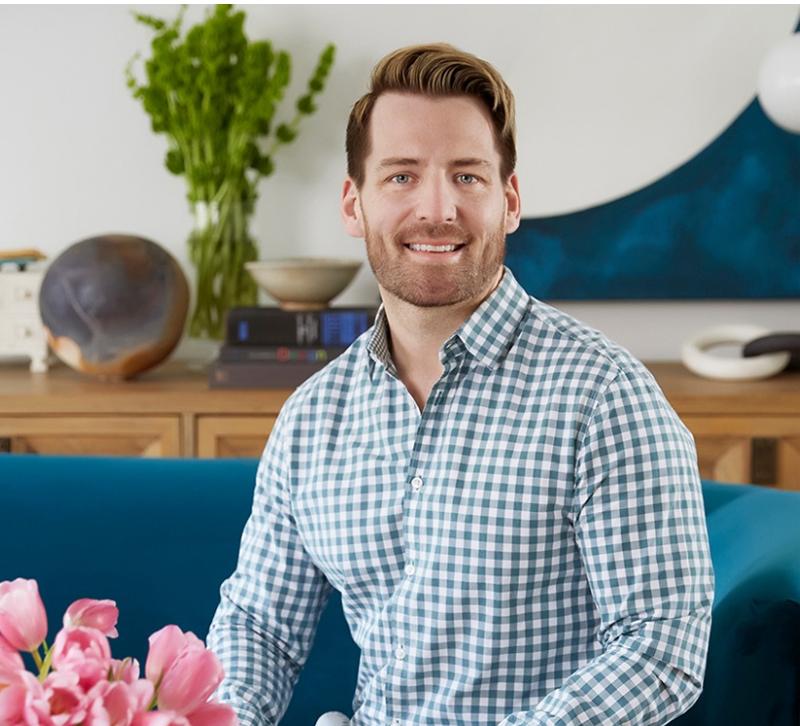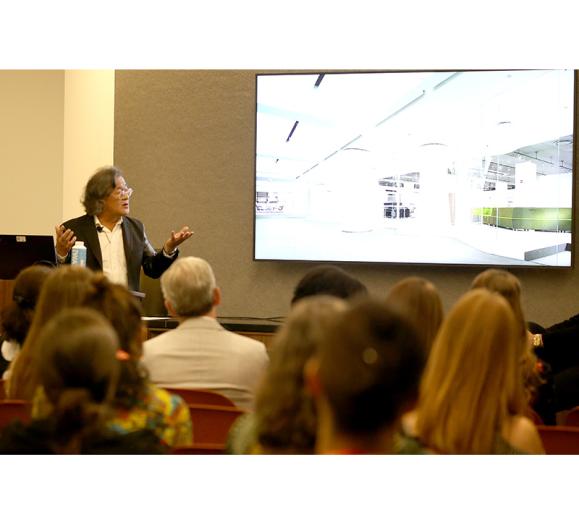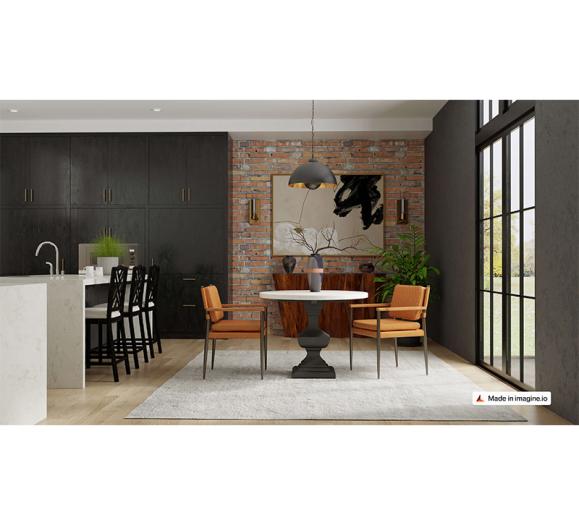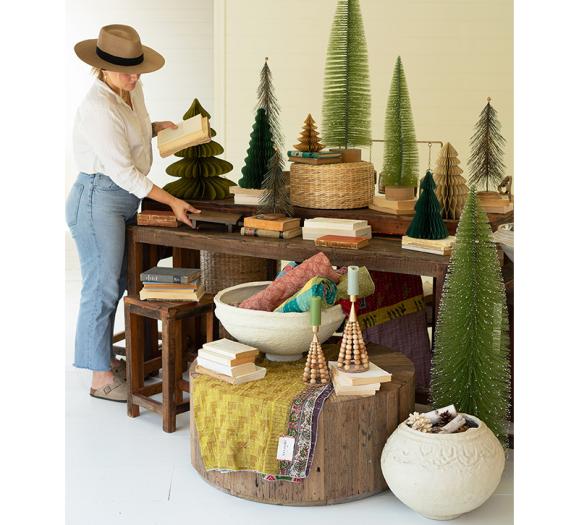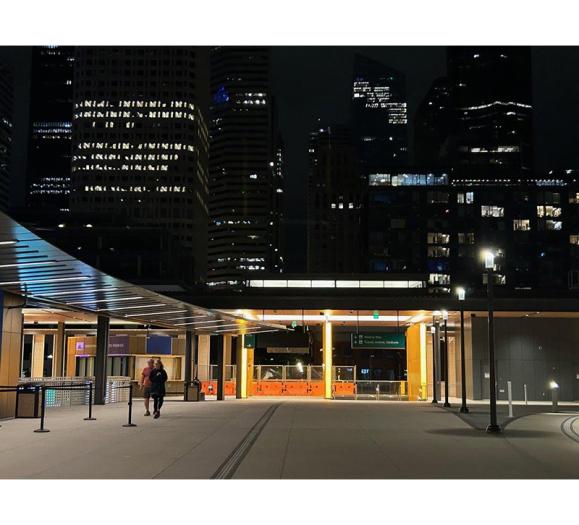Editor-in-Chief Nicole Davis sat down with Orlando Soria — a designer, blogger and influencer — at the summer Atlanta Market. Soria is best know for his blog, Hommemaker, as well as his large social media following, and we asked him about both of those, plus his burgeoning career. Below, read his comments on the challenges of making money as an interior designer, the biggest design faux pas in his eyes and how he's not balancing it all.
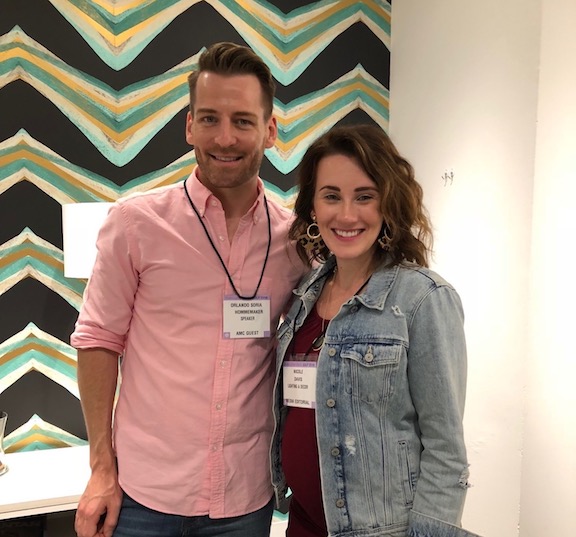
Furniture, Lighting & Decor: Give us the 30-second rundown of how you got to where you are today.
Orlando Soria: I was doing set design and production design and I was cast to be on Emily Henderson’s TV show “Secrets from a Stylist.” That’s how I started my design career. Now I'm mostly doing content, social media and sponsorship partnerships and my goal is to inspire a lot of people. I reached a turning point in my career where I had to decide if I wanted to design a few homes for extremely wealthy people or if I would like to talk to thousands of people about design. So that’s where I ended up, sort of as a design communicator. I love it. It gives me the opportunity to interact with brands, which is another reason why being here at market is so interesting because it’s introducing us to so many new vendors that we never knew before.
F,L&D: So you don’t have any formal design education?
OS: No, I actually studied art and graphic design. My design expertise came from doing production design and set design and then very quickly once I started working on HGTV I had to kind of learn how to be an interior designer for TV. Is designing for TV different than real life? A little bit because you’re looking for things that will look good on camera, which are much more colorful and exaggerated than in real life. There’s no subtlety. One thing that’s harder about designing for TV is that element of this has to look good on camera. One thing that’s easier is that people usually aren’t paying for it so there isn’t a sales aspect, which is the part of design that I hate. I hate trying to convince people of things and I’m sure a lot of other designers identify with that. You have your idea and you’re really excited about it and that’s only step one. Step two is actually getting the client to do what you want them to do.
F,L&D: What’s trending at the show?
OS: I think a trend generally is that things are moving in a bolder direction. I think we’re moving away from a decade of eclectic, natural-looking spaces that look collected over time — which is a look that I actually really love — but I think that the more high-design conceptual spaces are starting to make a comeback too. Things like bold wallpaper, a rug that has a large graphic on it, something that feels not quite as quiet as things have been over the last 10-15 years.
F,L&D: We know you’re working on your parents’ house right now. What other types of projects are on your roster?
OS: I’m actually working mostly on influencer-type stuff. I’m doing a project with Olympian skier Gus Kenworthy and he’s my only client right now. I’m working with Grove Collaborative, which is a website that sells natural cleaners and skin and hair supplies, to do a fun laundry room makeover, and also just creating fun content for my blog and Instagram.
F,L&D: How do you balance all of that?
OS: Well, so, the other thing that I’m doing is developing a web series and a TV show for an unspecified yet large network that everyone knows, so, I balance it by …. I don’t balance it actually. Like I was just thinking to myself, there are so many things I should be doing right now while I’m at this market, but you know ultimately the whole goal is to inspire and communicate with people so I don’t feel bad if I have to shuffle things around. I don’t have an assistant or a team at the moment so I’m trying to keep it to a point where I can manage all on my own — I’m failing a bit honestly so I may have to hire someone again but I have mixed feelings about it because it does create a level of logistical work that I don’t love. At the end of the day though we’re all just trying to do our best and that’s what we do.
F,L&D: You just wrote a book. Talk about how that process was.
OS: The book was crazy. I hated writing it. I wrote the whole thing. Basically what happened was I had been working on it for a while and I got to a point where I was like “I don’t think I’m going to finish this in time” so I contacted my publisher — I had a full-time job and I just didn’t have the time to work on it. They said no. So, luckily and unluckily, right after that I was dumped and had to move and I lost my job. The good part about it was that I had all this time to write the book. It was written during an incredibly stressful time so the book ended up being very emotional and raw and funny and open and I think it ended up being great because I was going through such a traumatic time. But writing a book is hard. It’s lonely. I had been writing blogs for year but that was a different form of writing that was really intimidating.
F,L&D: Will you do another book?
OS: I would like to. I’d really like to do a holiday decorating book because I love doing that. I also like the idea of a book that’s a little more universal, like about a particular style, that has more of a shelf life.
F,L&D: What are your biggest challenges in business today?
OS: The hardest thing is figuring out how to make money. The reason I’ve drifted away from design is because it’s really hard to make money. The clients have access to everything that you have access to on the Internet so they’ll constantly outsearch you for things. And another thing is I’m not a salesperson and I don’t like selling people on stuff. So managing the business side in order to make it profitable and being pushy enough to do things that you want are the two things that I struggle with. And I want people to know that because I think I’m a pretty well-known designer and it’s hard for me to make money so other people maybe will feel better knowing that.
F,L&D: What are your thoughts online interior design services?
OS: I worked for HomePolish for three years so I definitely think there’s a space for them to provide a service to certain people. I think that what those companies do and what I hope they keep doing is being a resource for the mass market, because the high end already knows how to find designers.
F,L&D: Last question: What’s an interior design faux pas that you wish people would stop committing.
OS: I have a lot of those actually. And there are always exceptions, but, one thing that I can’t stand is when stuff is at a diagonal. Like when someone puts a bed at a diagonal in a room. There’s a triangle of wasted space behind that. Another thing I can’t stand is tile designed to look like wood. I don’t like materials designed to look like other materials basically. I also don’t like fake candles. The point of a candle is supposed to be a beautiful, sensual object.



